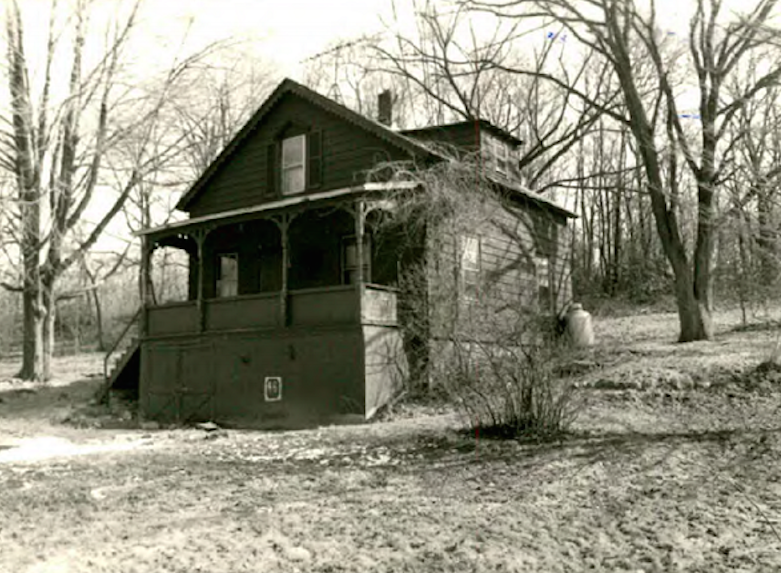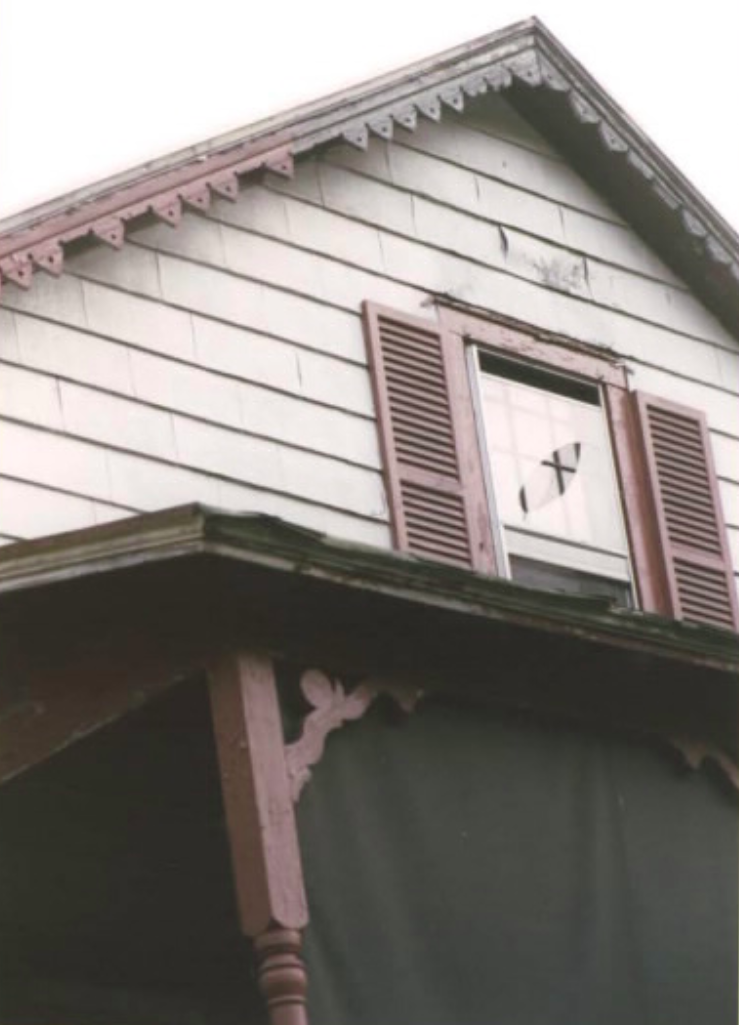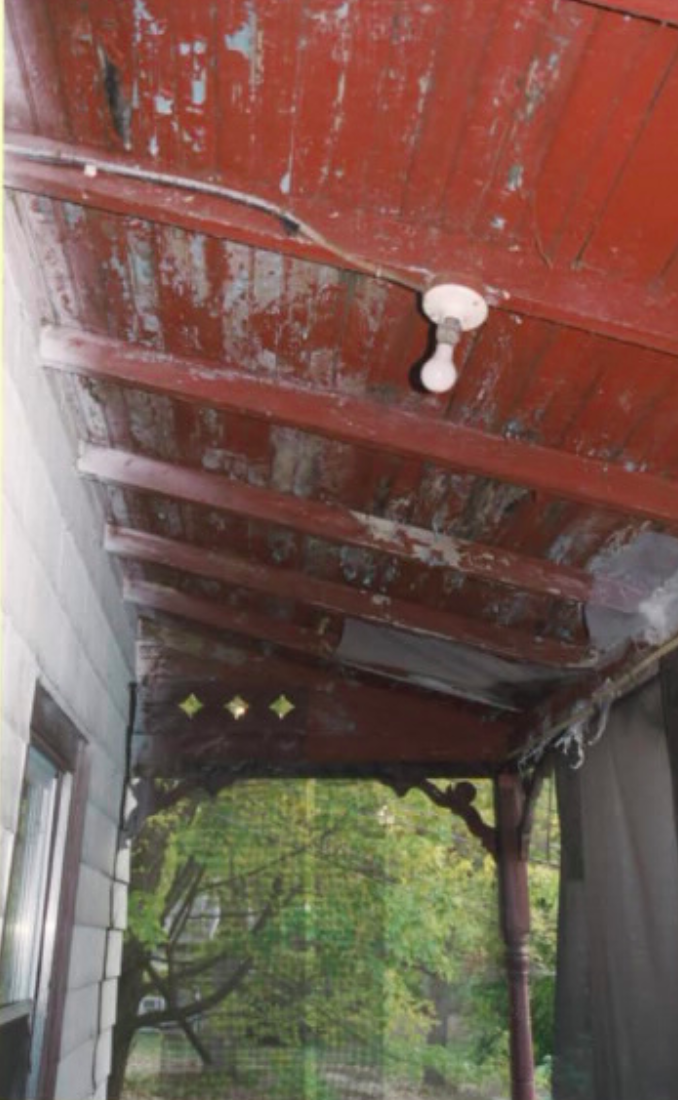For more than sixteen years, Preservation Long Island has supported the outstanding work of our Setauket-based advocacy partners, Higher Ground Inter-Cultural & Heritage Associates. We’re pleased to welcome guest blogger Robert E. Lewis, Higher Ground’s President, for an update on the Eato House restoration effort and a discussion of the site’s fascinating history. The Eato House was listed as one of Preservation Long Island’s Endangered Historic Places in 2017. Edited by Sarah Kautz, Preservation Director, Preservation Long Island.
Eato House Restoration Project
Higher Ground Inter-Cultural & Heritage Associates and Bethel AME Church of Setauket, NY, have partnered to restore the Reverend David and Mary Baker Eato House, a significant landmark within the Bethel-Christian Avenue-Laurel Hill Historic District, for use as a community heritage center for residents and visitors. Several recent grant awards have brought new opportunities to advance the project, including a $1,220 grant from the Unitarian Universalist Fellowship at Stony Brook, a $3,000 grant from New York Landmarks Conservancy’s Sacred Sites Program, and a $25,000 grant from the Gerry Charitable Trust in October 2019.
With this fresh infusion of funds, Higher Ground and Bethel AME Church will expand organizational capacity in the spring of 2020 and begin planning Phase One of the restoration work. With sincere appreciation, Higher Ground also acknowledges funding received in 2009 from Hofstra University’s National Center for Suburban Studies and in 2015 from the Preservation League of New York State’s Preserve NY grant program that supported the documentation and protection of historic resources in the BCALH District.



Rediscovering American History at the Eato House
Although we’re not sure exactly when the Eato House was built (probably during the early 1900s), the lives of the structure’s historically significant occupants, Rev. David Eato (1854–1928) and his wife, Mary Lucinda Baker Eato (1868–1961), certainly offers a fascinating view of American history. Their stories are part of the long-overlooked history of African Americans in the United States and on Long Island, which is now being rediscovered thanks to public activism and innovative studies by local, state, and federal organizations. This new coalition of twenty-first-century researchers and advocates are at the forefront of revising American history to include once forgotten chapters of our past, helping to create a more inclusive account of American history that remembers and acknowledges the experiences of people like the Eatos and their neighbors.
Among the remarkable stories preserved at the Eato House are the impacts of slavery, the influence of the Great Migration and African Methodist Episcopal (AME) Churches, and the struggle for African American homeownership. All of these elements are interwoven into the life of Mary Lucinda Baker Eato. Born in 1868, Mary was the only child of Oliver and Catherine Baker, both of whom had been slaves prior to 1863. It’s assumed that Mary lived with her parents on the Baker plantation in Troy, SC, where she probably witnessed the unjust and often cruel treatment of African Americans in the Jim Crow South after Reconstruction ended in 1877.

Mary was educated at Allen University, where she graduated, most likely with a degree in music. Her parents, or possibly the Bakers, likely assisted her in attending Allen University, a historically black university originally founded in Cokesbury, SC, in 1870 by the AME Church and moved to Columbia, SC, in 1880. She married Robert Wydeman in Troy, SC, and had five daughters: Jessie, Katie, Josephine, Mary Louise, and Frances. In 1901, Mary joined other African Americans in the Great Migration, moving north to Port Washington, NY, with her five daughters and mother.
On Long Island, Mary supported her family with domestic work and occasional music lessons, meeting Rev. David Eato at Port Washington’s Mt. Olive AME Church, where she played piano/organ. The couple were married at Mt. Olive AME Church in June of 1913 and moved to Setauket sometime between 1915 and 1917, where Rev. Eato was given charge of the Bethel AME Church. Like most people of color during the Jim Crow era, the Eatos initially rented their house in Setauket. But remarkably, after her husband’s death, Mrs. Eato was able to purchase the property in 1928, making the Eato House an important example of African American homeownership on Long Island. Mary also became a member of the church’s Board of Trustees during Rev. Eato’s tenure and later served as Sunday School teacher under the pastorship of Rev. Alfred DeLima. By the late 1950s, neighbors knew Mary as a tall-framed stern woman who was often seen walking along Christian Avenue to and from Bethel AME Church. Folks still living on Christian Avenue today have fond memories of seeing her sitting on her porch, watching the neighborhood kids playing softball in the middle of Christian Avenue.

There are many more African American sites like the Eato House that can help us to see history differently. When the architecture of the Eato House and character of the surrounding neighborhood are understood together with the stories of its occupants and community members, the results can be revelatory. However, we must continue working to breakdown misconceptions about race and persistent cultural biases in American history. It is imperative to posit new arguments against old assumptions and to engage in conversations that encourage us to reimagine American history and how it is taught in our schools and experienced at historic sites.
By Robert E. Lewis,
President, Higher Ground Inter-Cultural & Heritage Associates
For more details about the Eato House, the Eatos, and the Bethel-Christian Ave-Laurel Hill Historic District please see:
Cultural Resource Survey of Sites Relating to the Native American-African American Community in the Three Village Area (the Setaukets, Stony Brook, and Old Field), with a focus on Bethel- Christian Avenue-Laurel Hill, Town of Brookhaven Historic District. By Judith Wellman, Robert Lewis, Judith Burgess, Christopher Matthews, and Karen Martin (Setauket: Higher Ground Inter-cultural and Heritage Association, 2016).
National Register of Historic Places Nomination: Bethel Christian Avenue Historic District (16NR00132). Prepared by Judith Wellman, with Robert Lewis, Judith Burgess, Christopher Matthews, and Karen Martin (edited by Jennifer Betsworth and Kathleen LaFrank, NY SHPO) (Setauket: Higher Ground Inter-cultural and Heritage Association, 2017).



